Tennessee Field Diamonds
1
A treasure 485 million years in the
making.
|
Similar crystals
are found in many places
throughout the world.
See Quartzpage.de
|
Double terminated crystals are illustrated on the
internet from a number of sources including cracks in
Septarian nodules from the French Alps
(http://www.quartzpage.de/dia_text.html), and
northern Ohio
(http://www.vasichkominerals.com/Lamereaux1.html).
The famous “Herkimer diamonds” occur in
irregular vugs and cavities within undeformed Cambrian
dolomites in upstate New York. Many images can be
found online, for example
http://www.quartzpage.de/her_text.html.

Crystals sold to me as being from Tibet. |
|
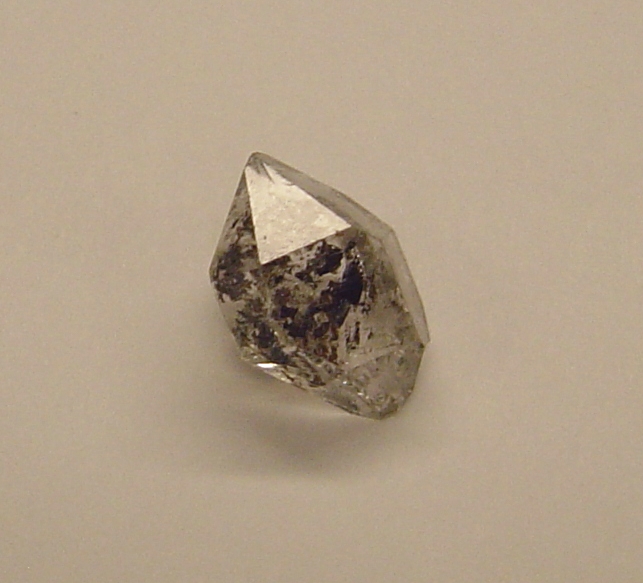
Crystal from Pakistan. The inclusions are
brown in transmitted light. |

Quartz crystals near Saltville, VA occur in the Middle
Ordovician "Moccasin Formation" equivalent to
the "Chicamauga Group" in the diagram below.
They are addressed elsewhere on this site.
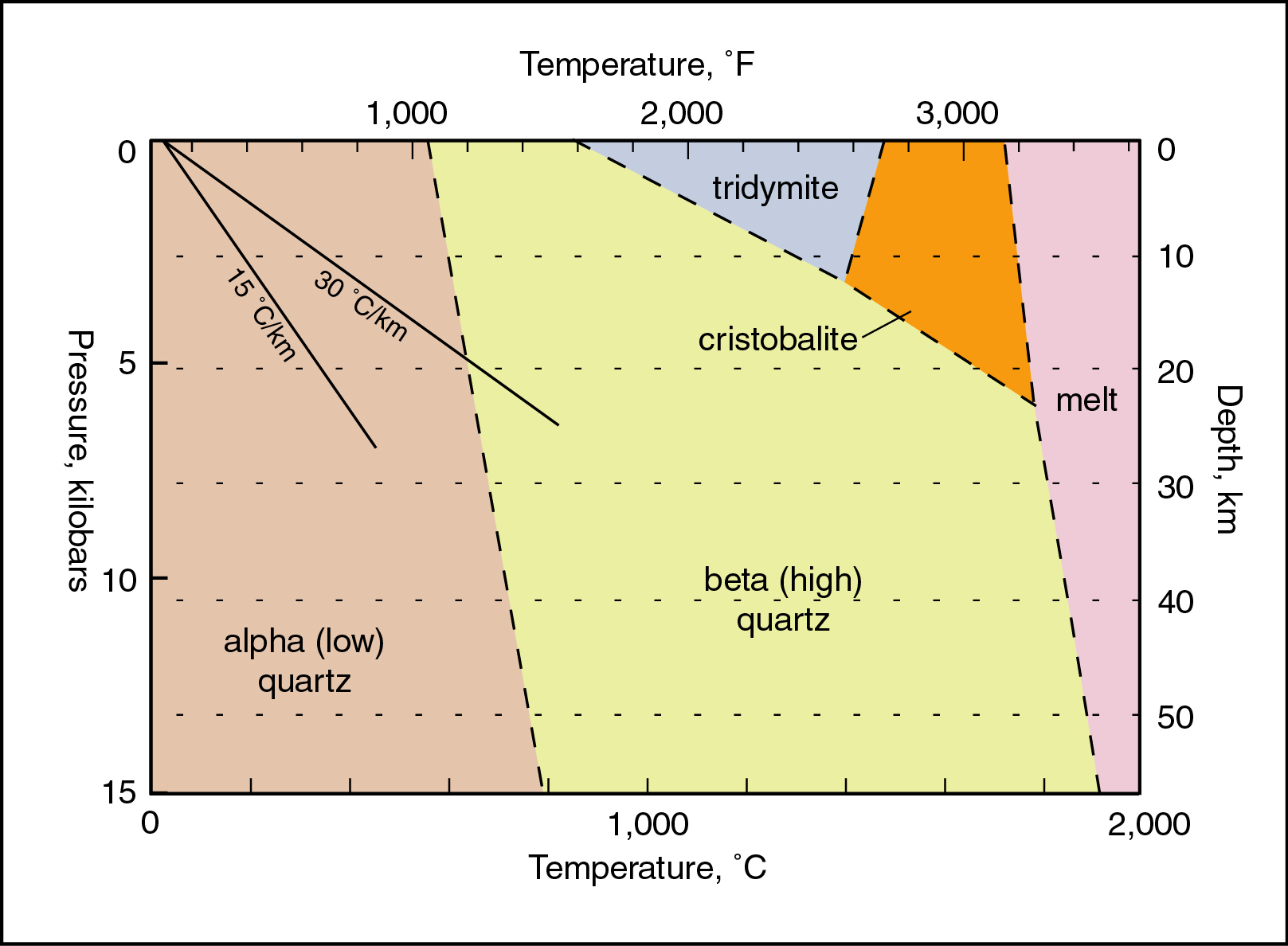
Phases of SiO2, with typical geothermal gradient ranges.
The high Pressure phases coesite and stishovite are not
shown. Note that pressure is shown increasing in
the downward direction.
Quartz crystal showing typical morphology, and stereo
plot. “S” and “x” faces allow one to
determine the handedness of the crystal, but the s faces
were only seen in a few specimens from one locality, and x
faces have not yet been observed. More
commonly developed faces are shown with larger font.
Also shown are the uncommon ‘p and ‘? faces
seen on some crystals from the Walland occurrence,
plotted from angle data tabulated in The
System of Mineralogy - Volume 3 Silica Minerals by
Clifford Frondel (Jan 1, 1962). These have not been
independently determined.
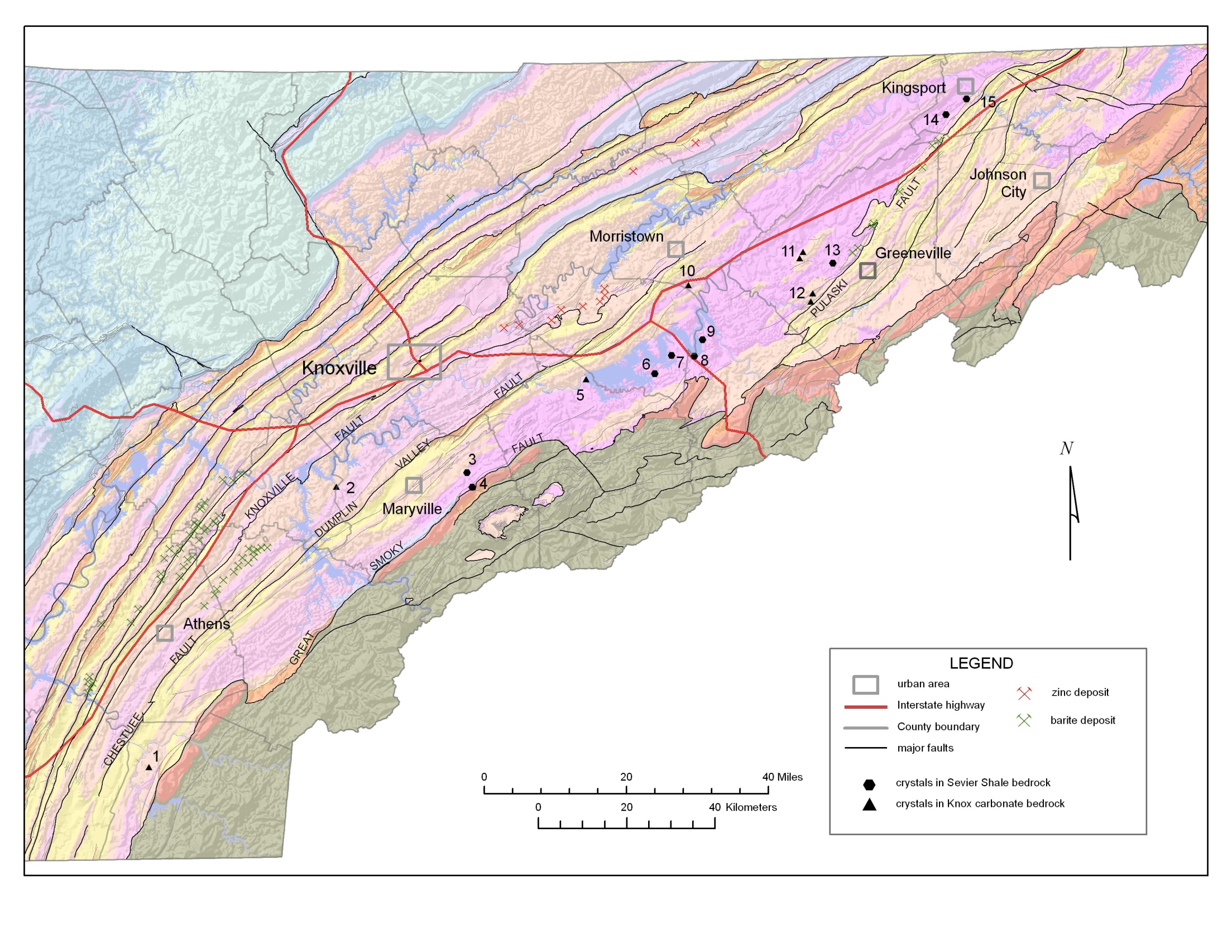
Known locations for “Herkimer” type quartz,
along with dolomite breccia-hosted barite and zinc
deposits, and major faults with shaded relief overlay.
Basemap and faults from the Geologic Map of Tennessee,
1:250,000.
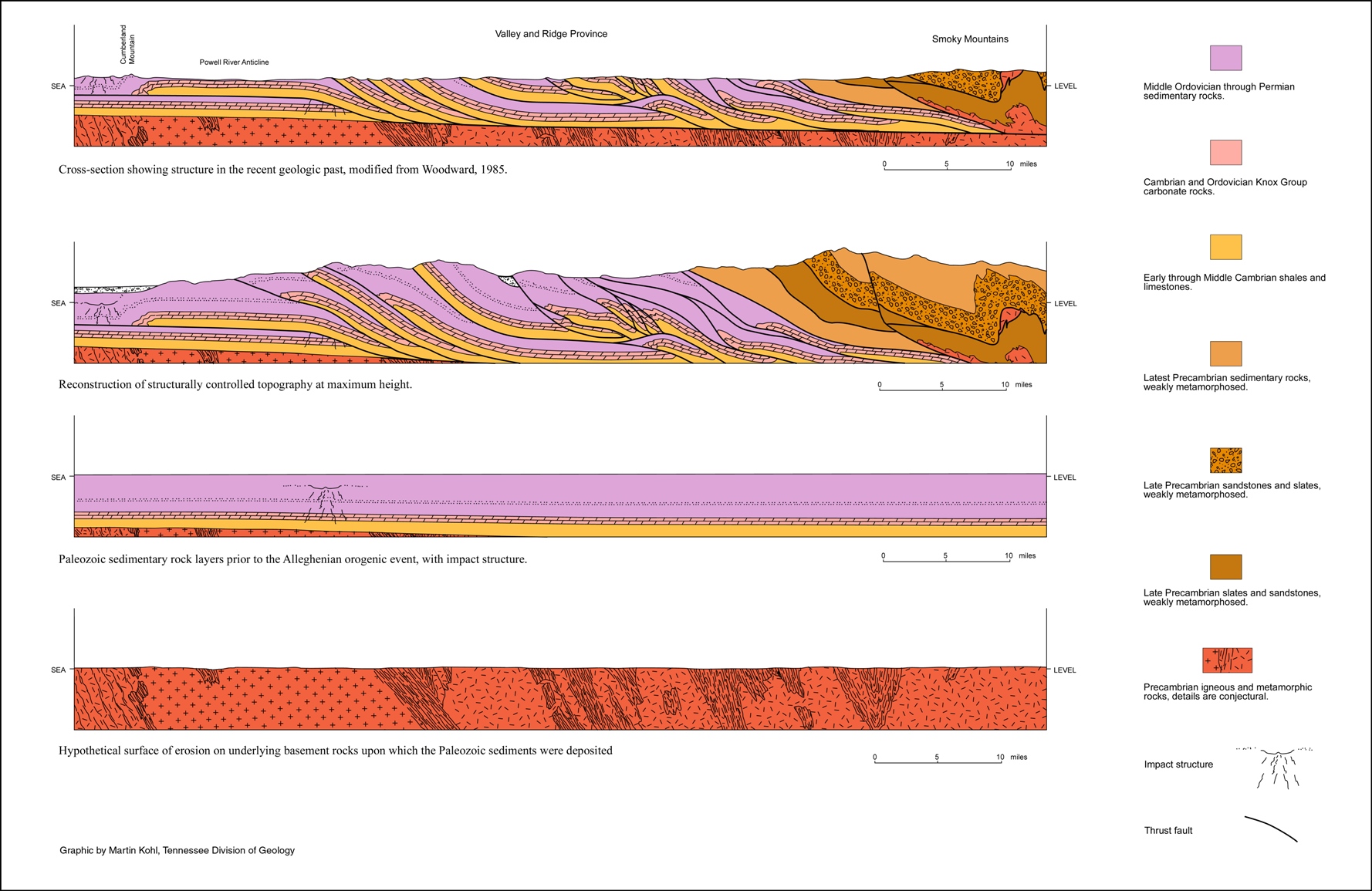
Brief geologic history of East Tennessee, in four stages.
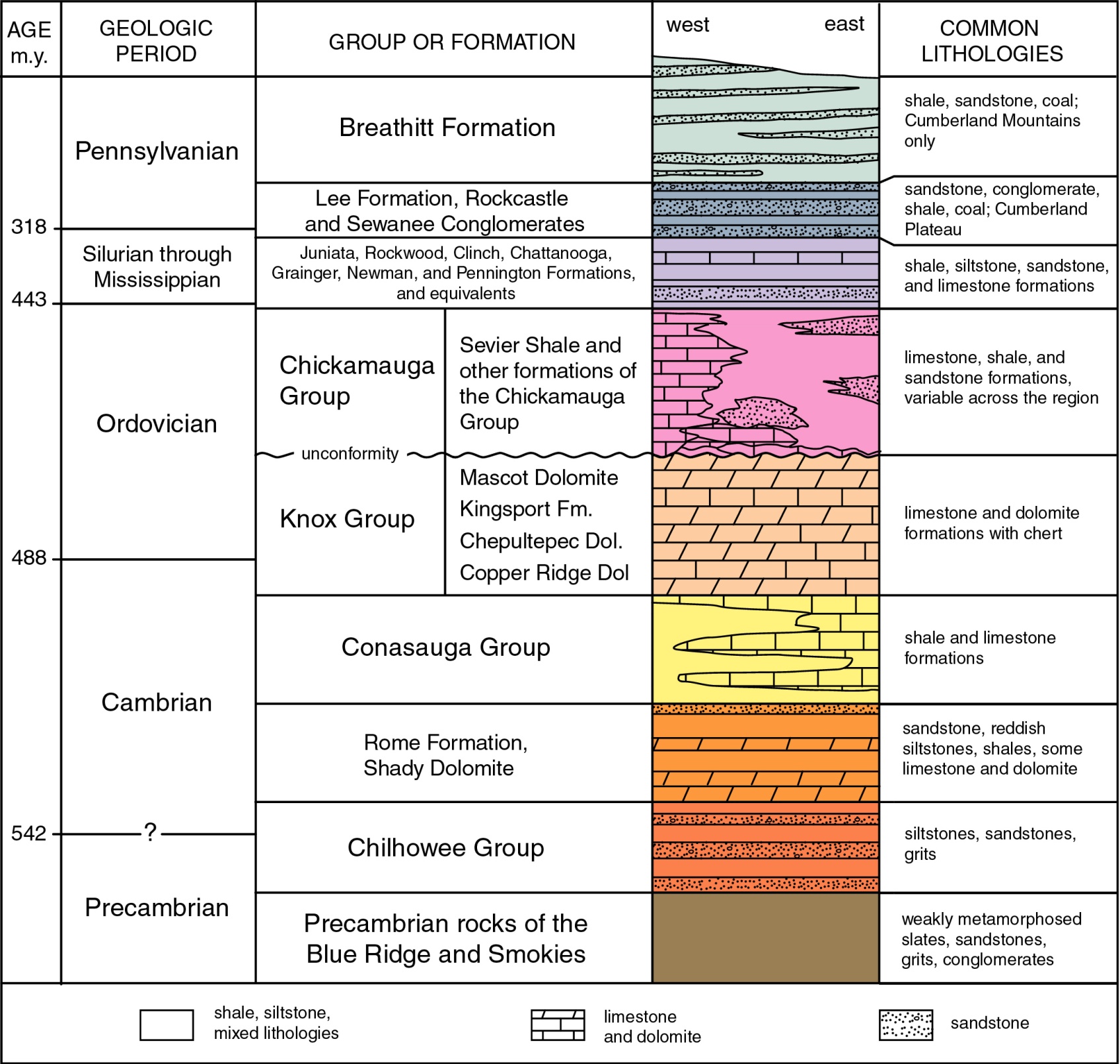
Stratigraphic units of the Valley and Ridge Province of
East Tennessee. Quartz crystals occur in open space
within collapse breccia bodies in dolomites of the Knox
Group, and in vugs and cavities within the Sevier Shale
that were opened by deformation associated with the
Alleghanian Orogeny.
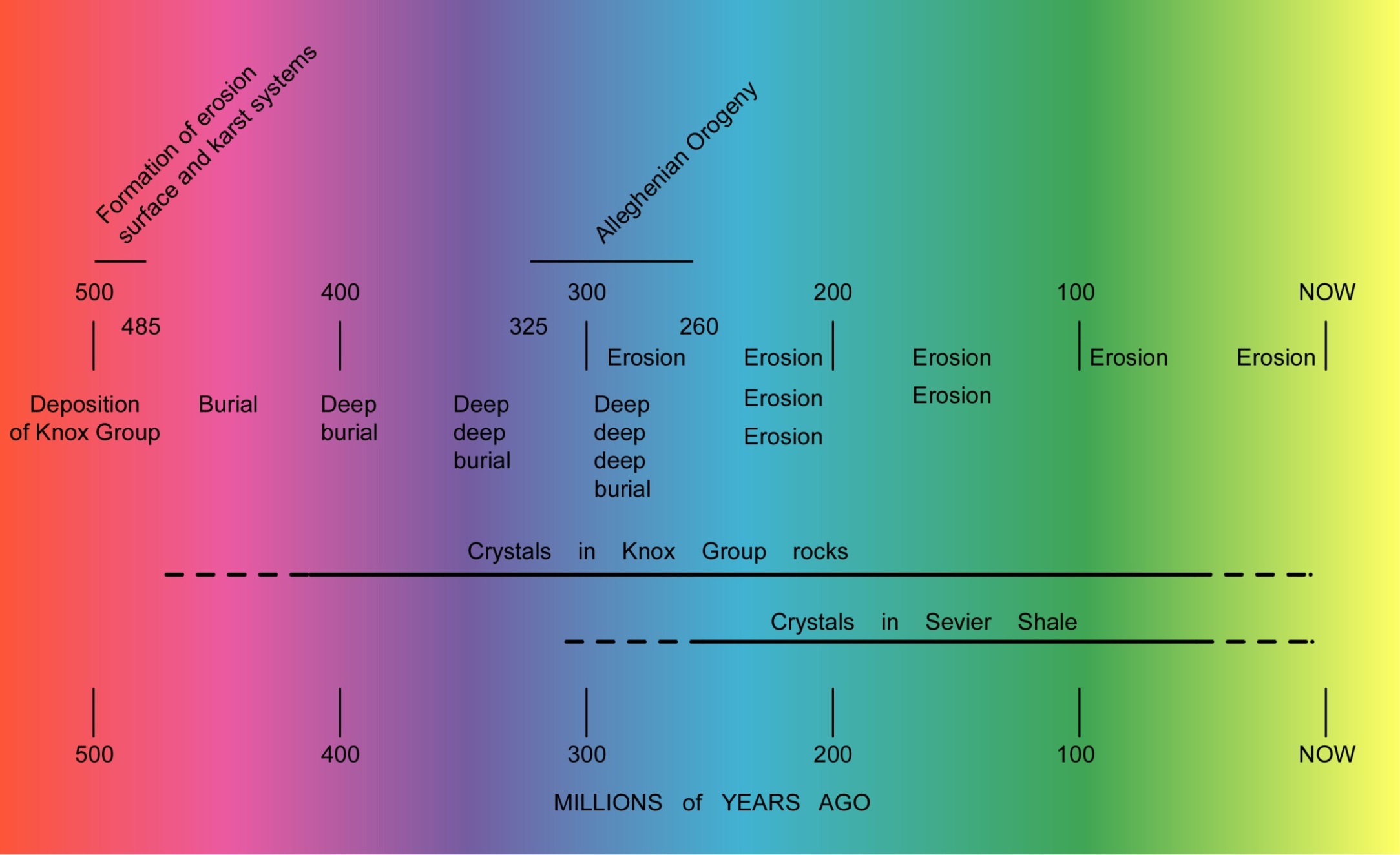
Time Line, with age range for crystals relative to
potential open space. Crystals found in the Knox breccias
could have been deposited during the entire time interval
from shortly after the formation of the unconformity to
the relatively recent geologic past, while those in the
Sevier Shale and any younger rocks could not have formed
before the orogeny created open space through tectonic
deformation. There were good images available of karstic
processes and paleokarstic collapse breccias at Zeng, H.,
Wang, G., Janson, X., Loucks, R., Xia, Y., Xu, L., and
Yuan, B. (2011). ”Characterizing seismic bright
spots in deeply buried, Ordovician Paleokarst strata,
Central Tabei uplift, Tarim Basin, Western China.” GEOPHYSICS,
76(4), B127–B137
Douglas Dam
(locality 5)
One of the most prolific sites
yet found:
Veins and breccia zones in the
upper
part of the Mascot Dolomite
|
| The shores exposed near the
boat launch area just south of Douglas Dam is one
of the most productive places historically.
In spite of the fact that it is well known and
close to Knoxville, therefore quite picked-over,
it continues to yield specimens year-after year
as the shoreline erodes during winter draw-down. |
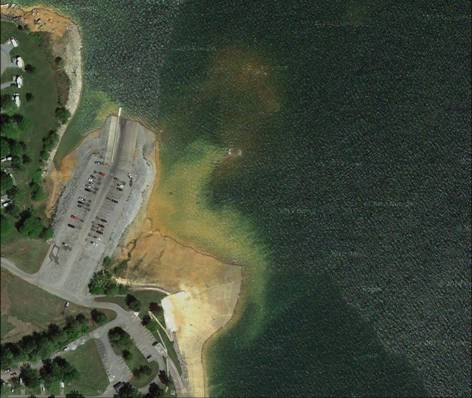
Douglas Dam area at relatively high water.
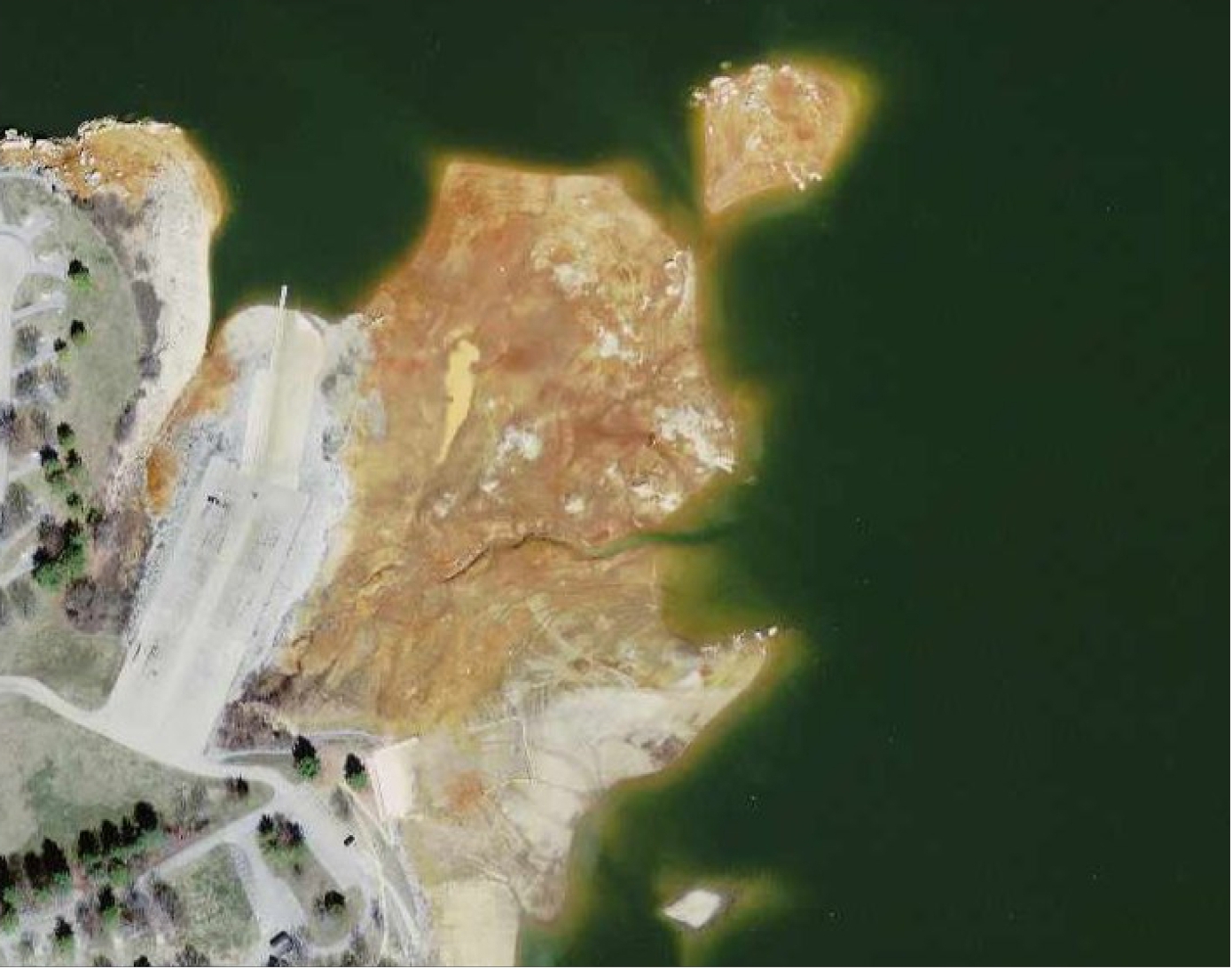
Douglas dam area at mid water.
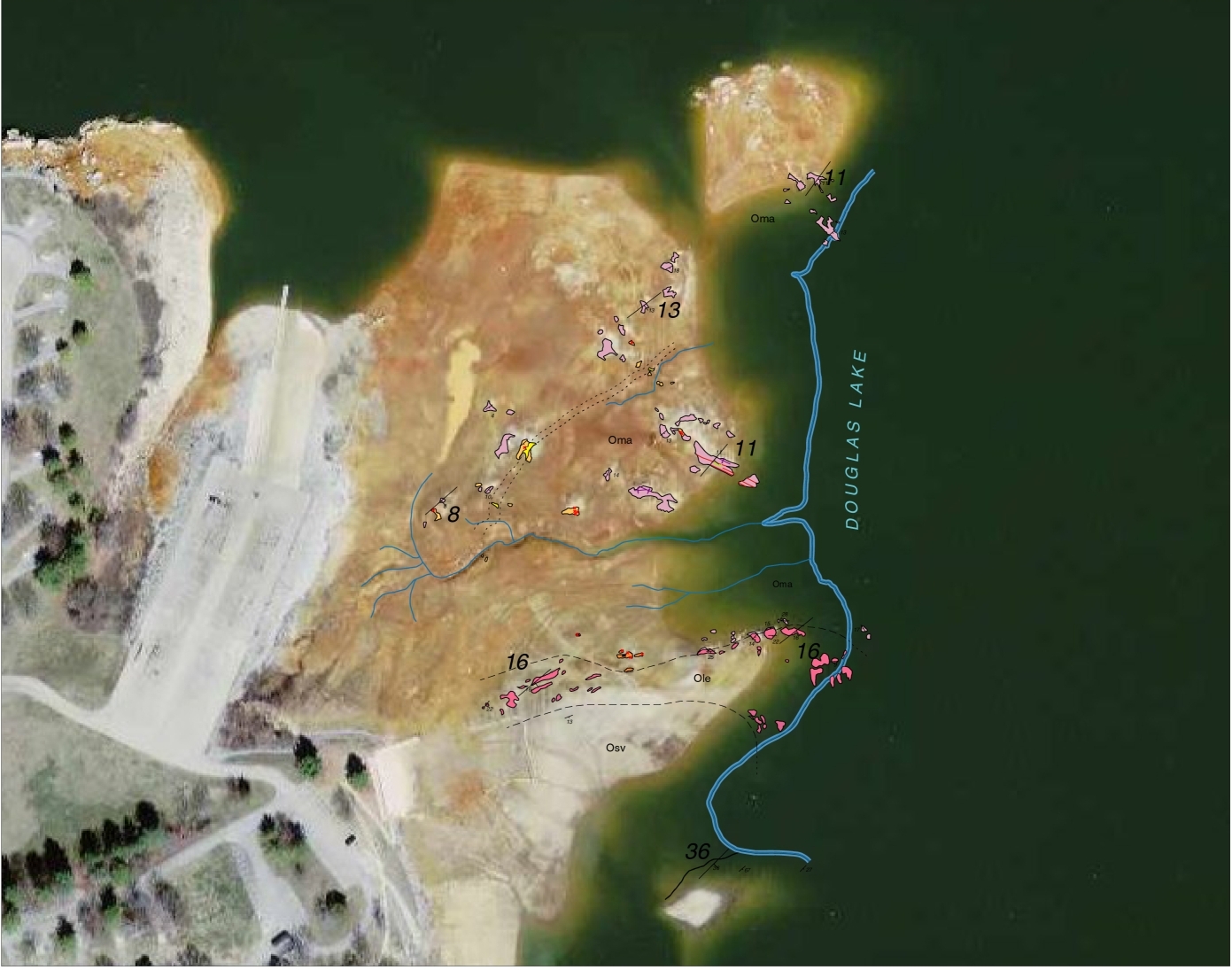
Features and the shoreline on the day I was there
mapping, when the water was lower still. Areas
without crystals were not included.
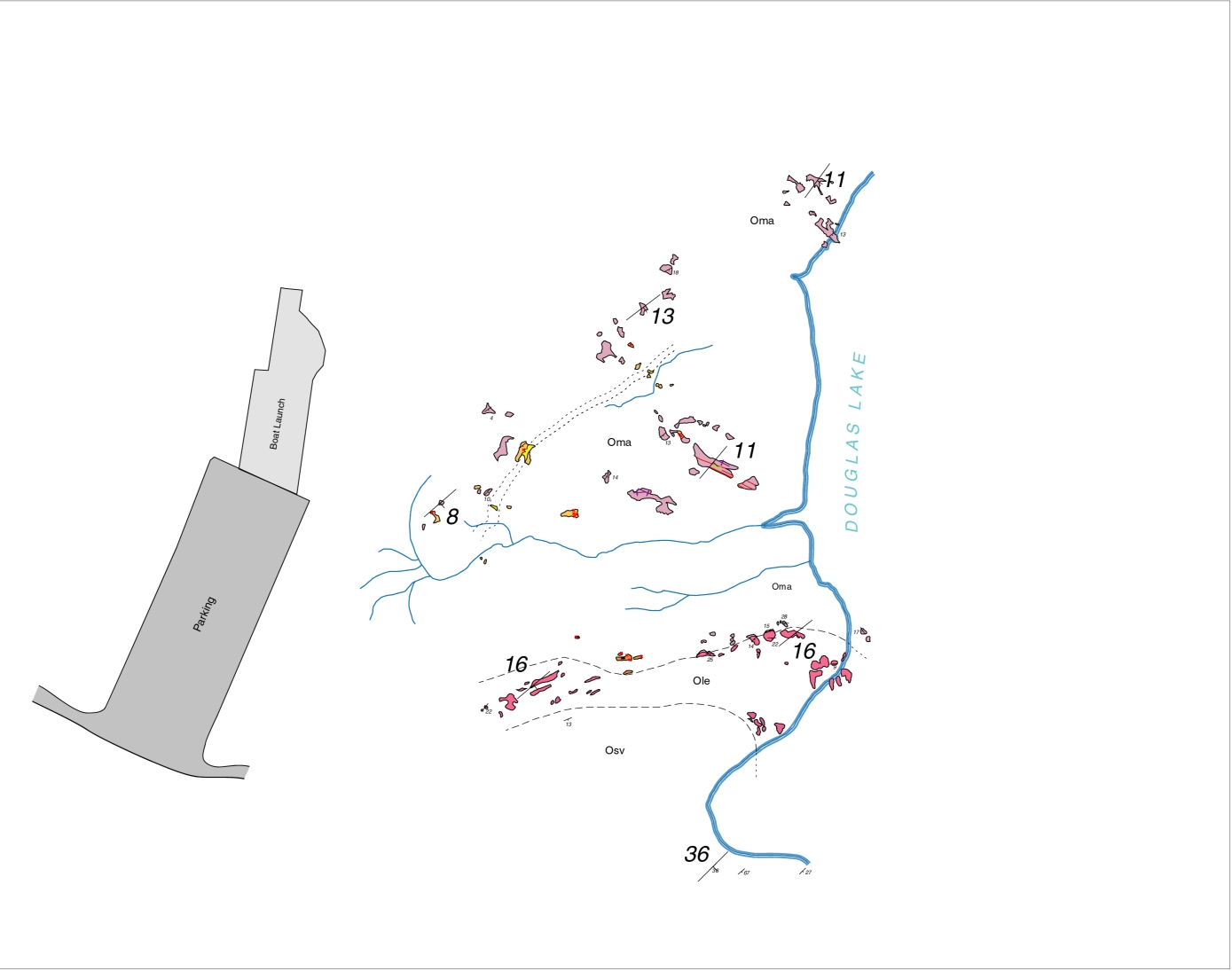
Features used to compile map, with inferred contacts.
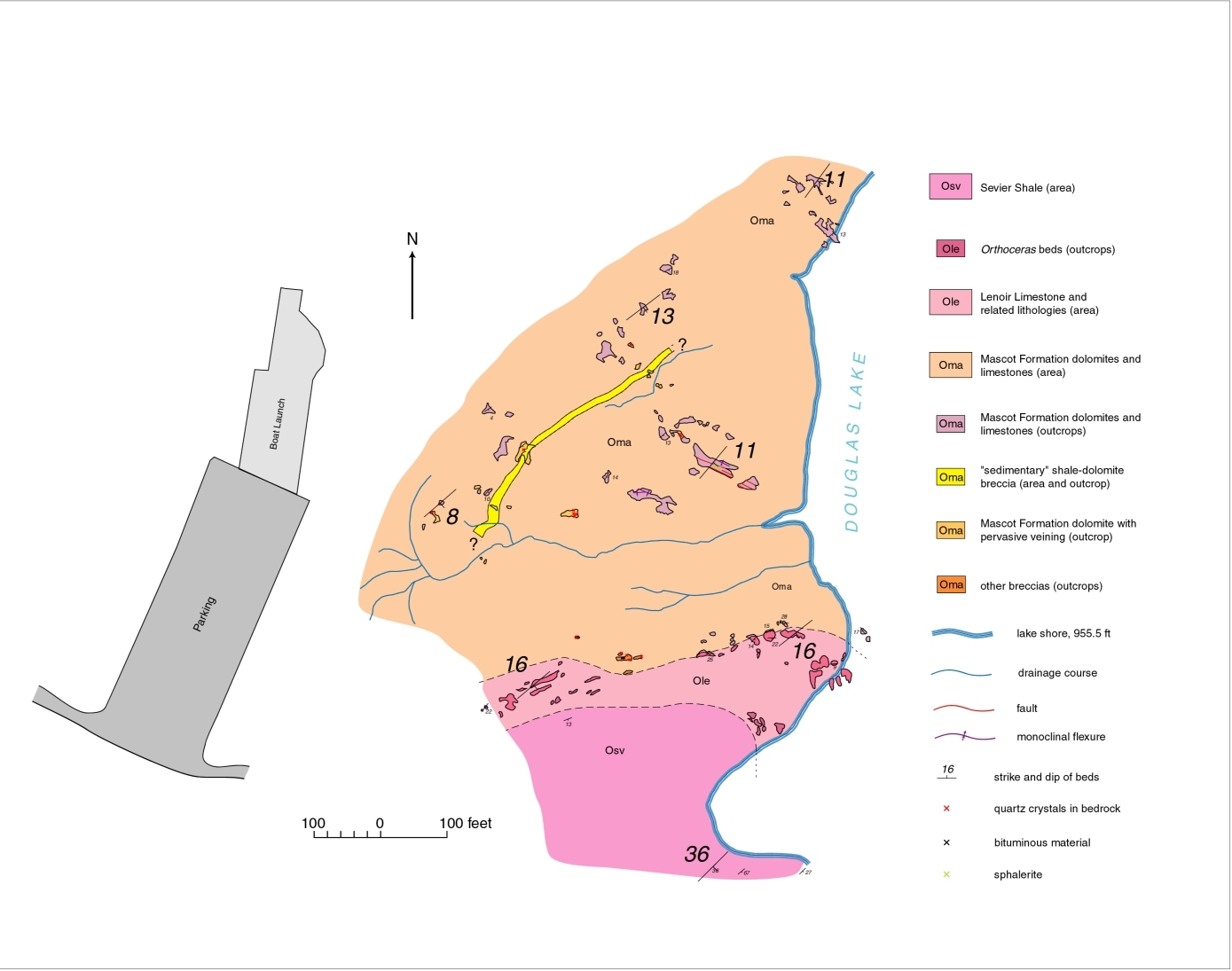
Interpretative geologic map.
Features
Exposed by winter draw-down
Stratigraphy – fossils – structure
|
Virtual field trip to the Douglas Dam
area.
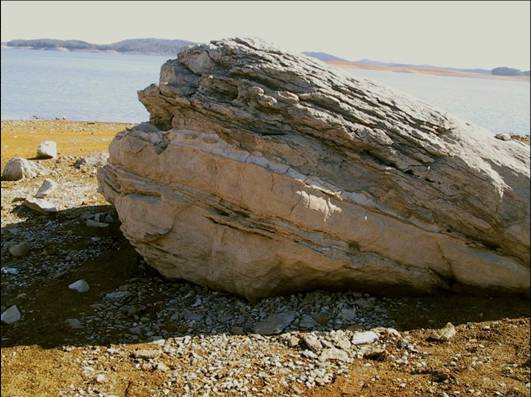
Outcrop with post-Knox unconformity contact. Lenoir
Limestone forms upper half above white bed.
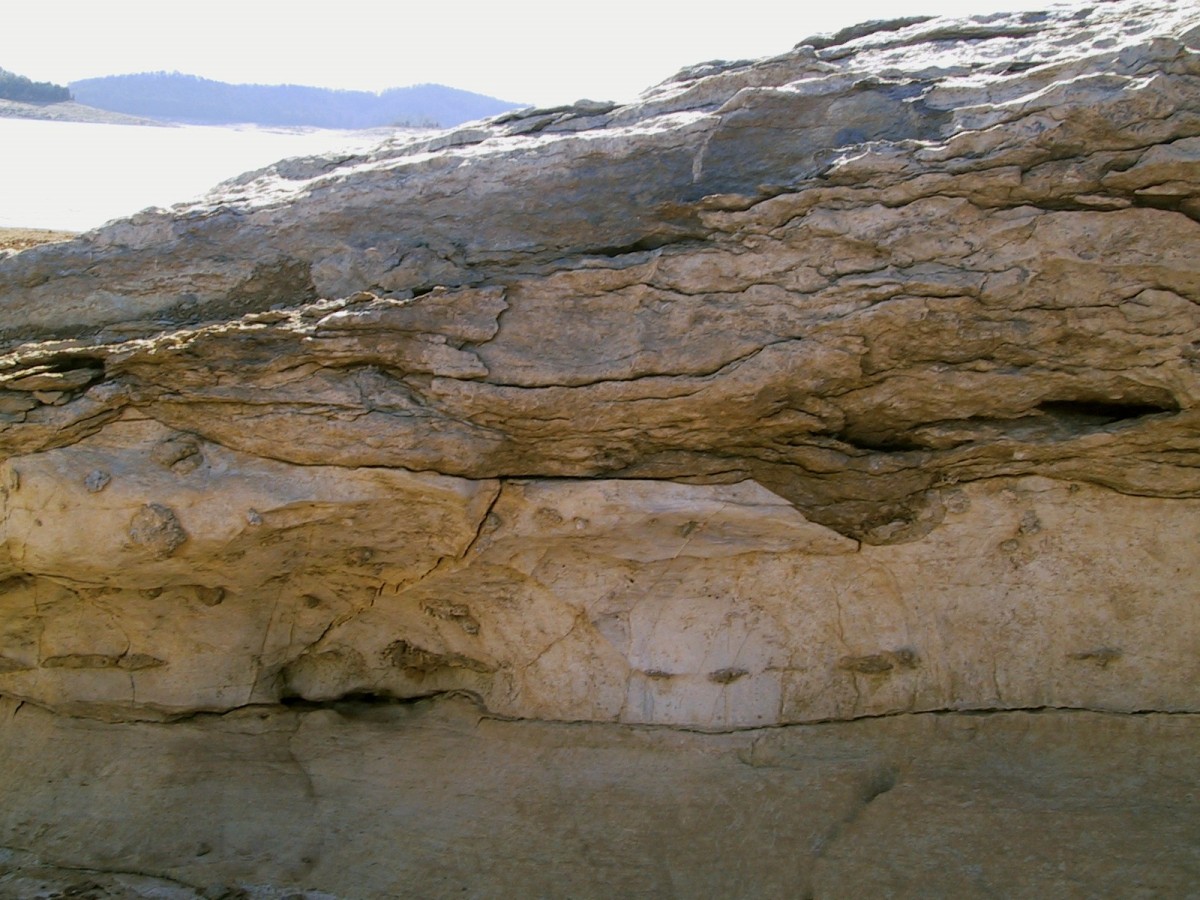
Unconformable surface, detail.
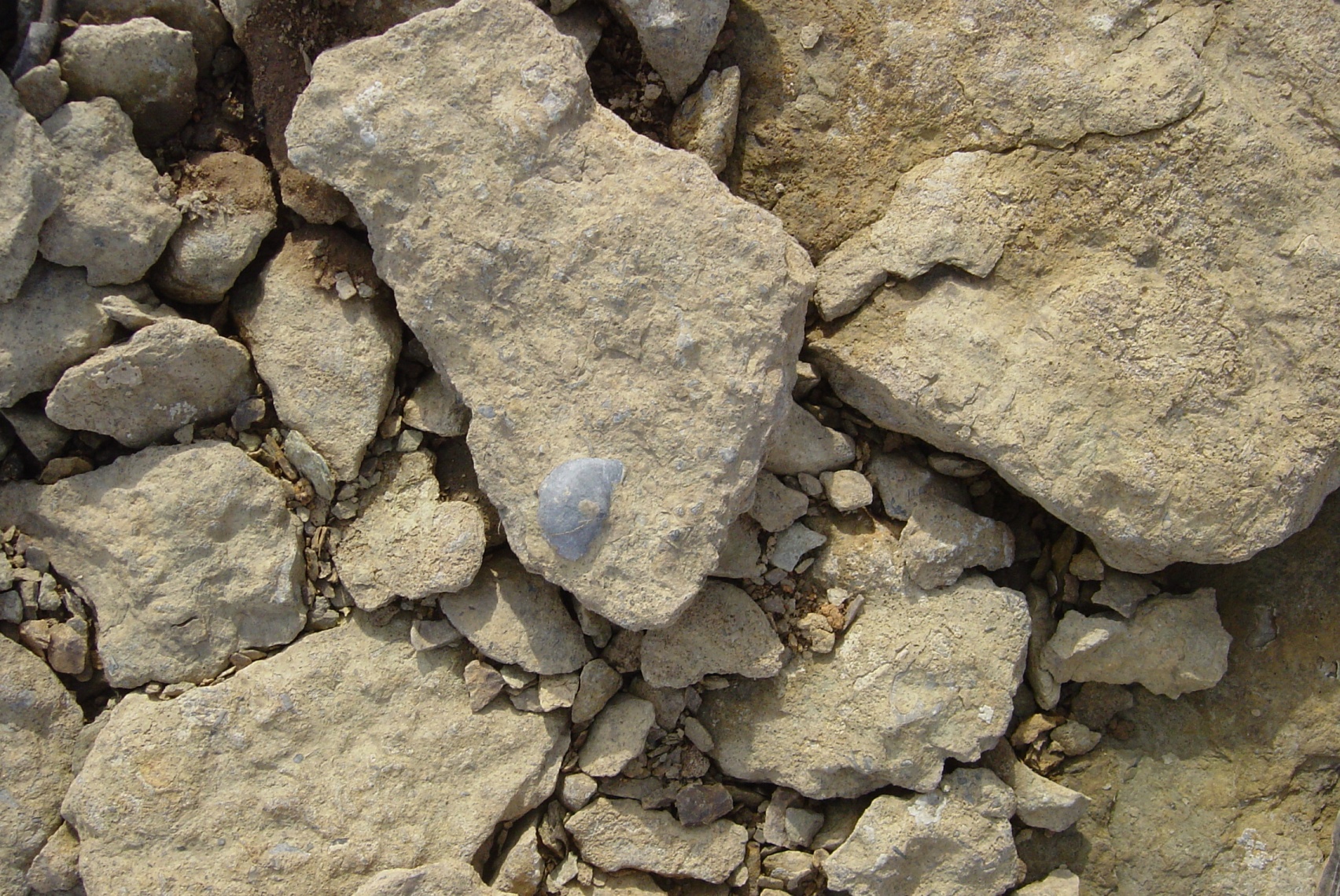
Fossiliferous Lenoir Limestone just above the
unconformity.
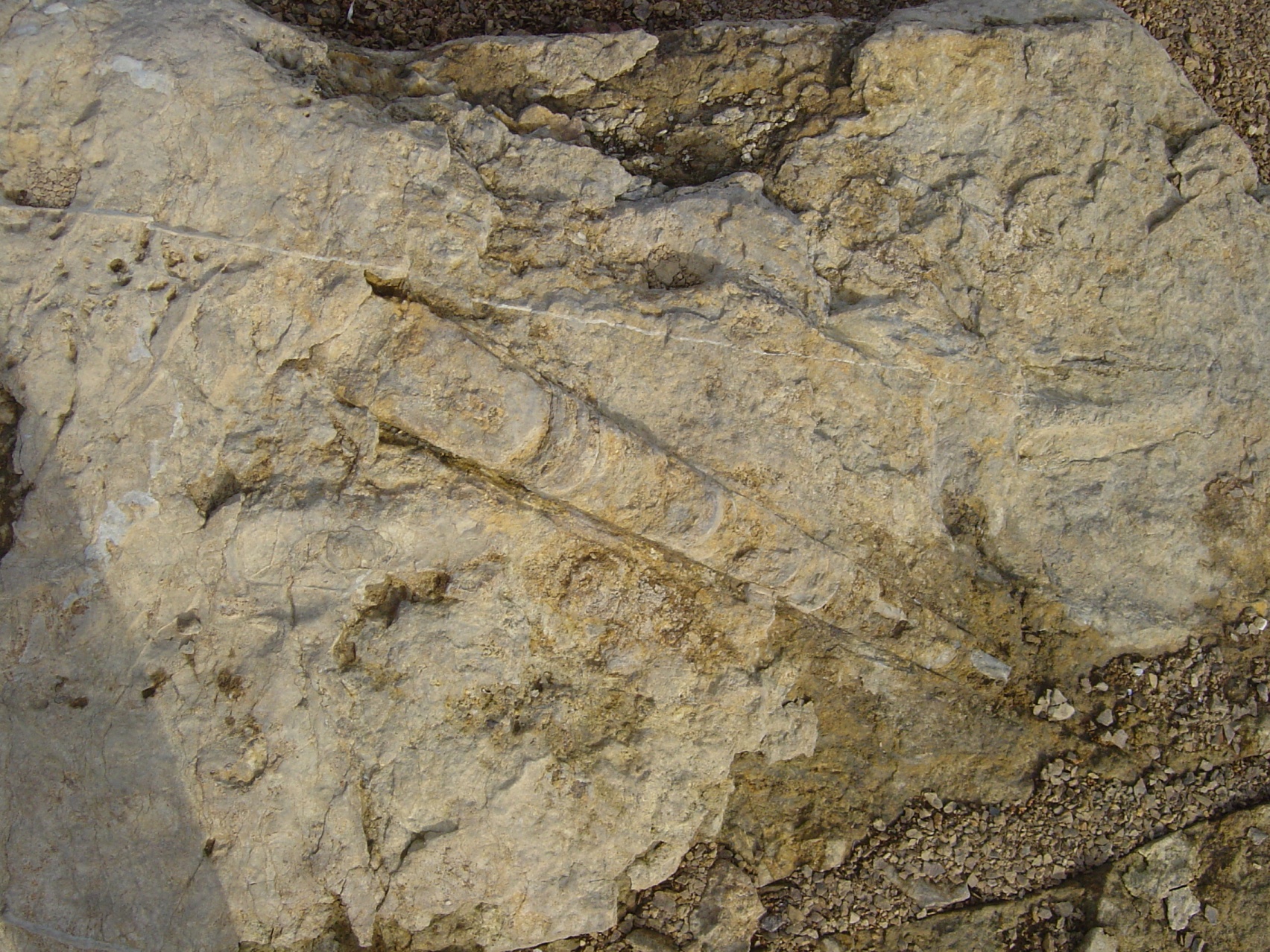
Orthocone (Michelinoceras) beds above the Lenoir
Limestone.
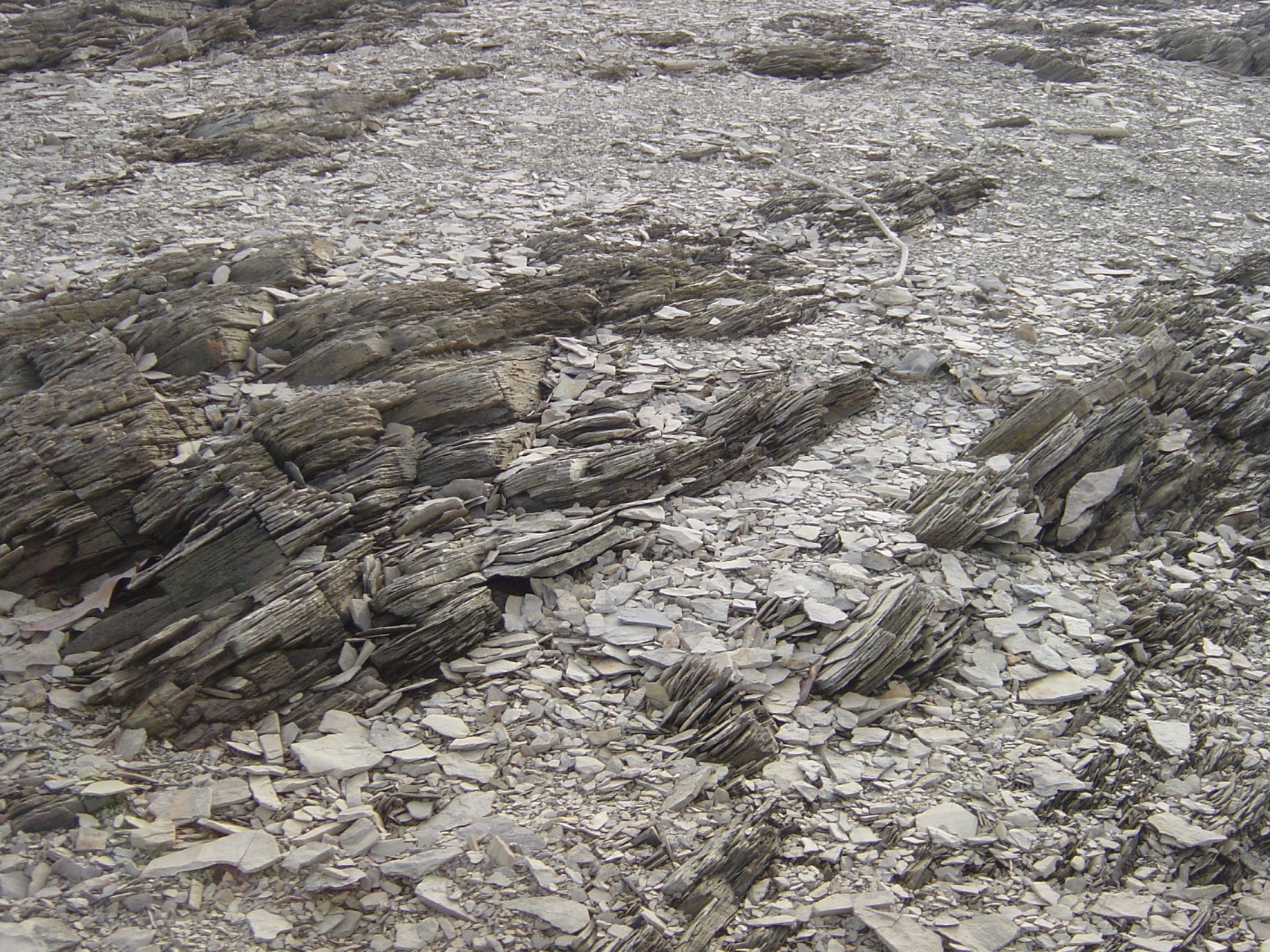
Sevier Shale along shore farther to the south.
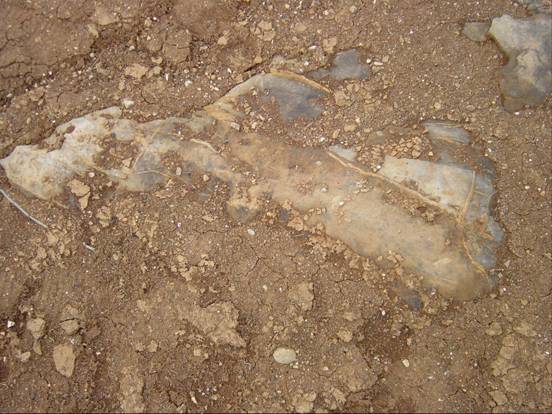
Dolomite veins in crackle-brecciated dolomite.
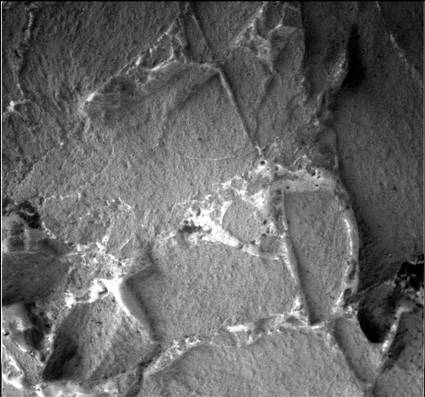
Universality of crackle-type breccias. This one is
on Mars, photo courtesy of JPL, NASA, and the rover
Opportunity.
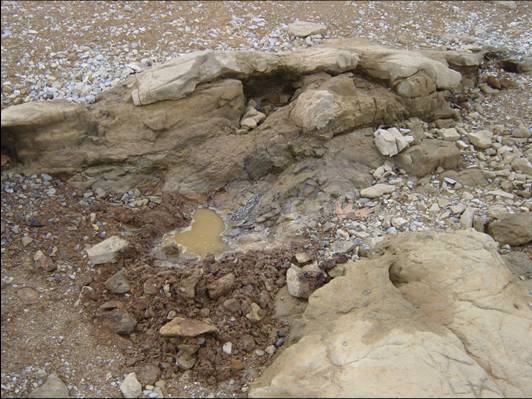
Outcrop with pyrobitumen vein, where I uncovered it and
washed it off.
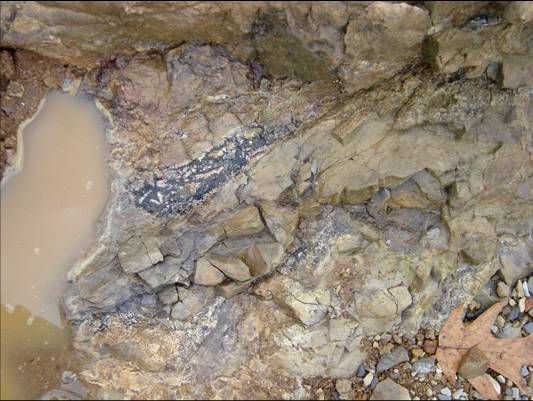
Closer view of pyrobitumen vein.
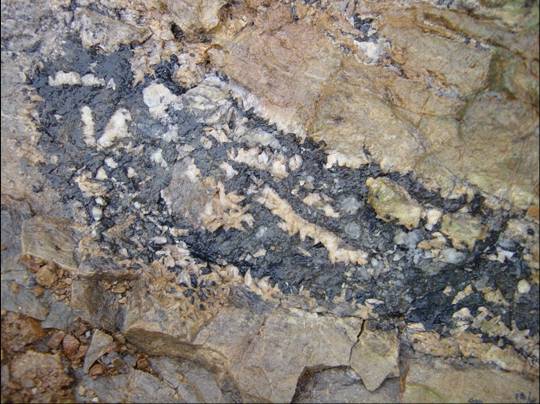
Close up, wet. The whitish fragments are
crystalline vein-filling dolomite. Quartz crystals
appear bluish gray.
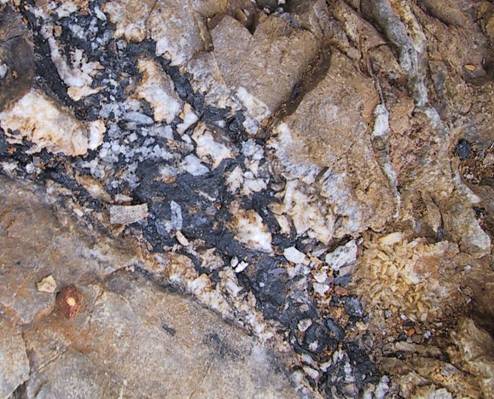
Dry, showing the quartz crystals better.
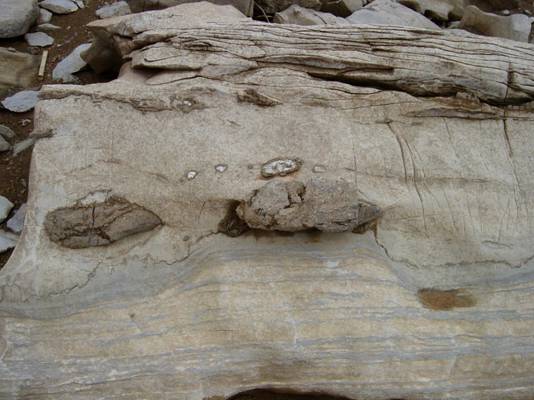
Calcite-filled vugs as a growth medium, a potential
explanation for some of the things we see in these
crystals. These exposures are in the same beds as
those near Douglas Dam, a few miles northeast along
strike.
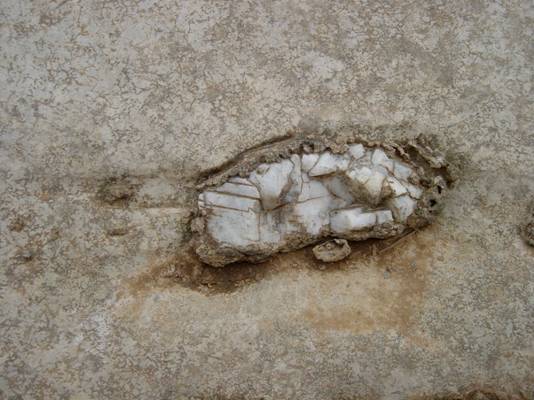
Closer view.
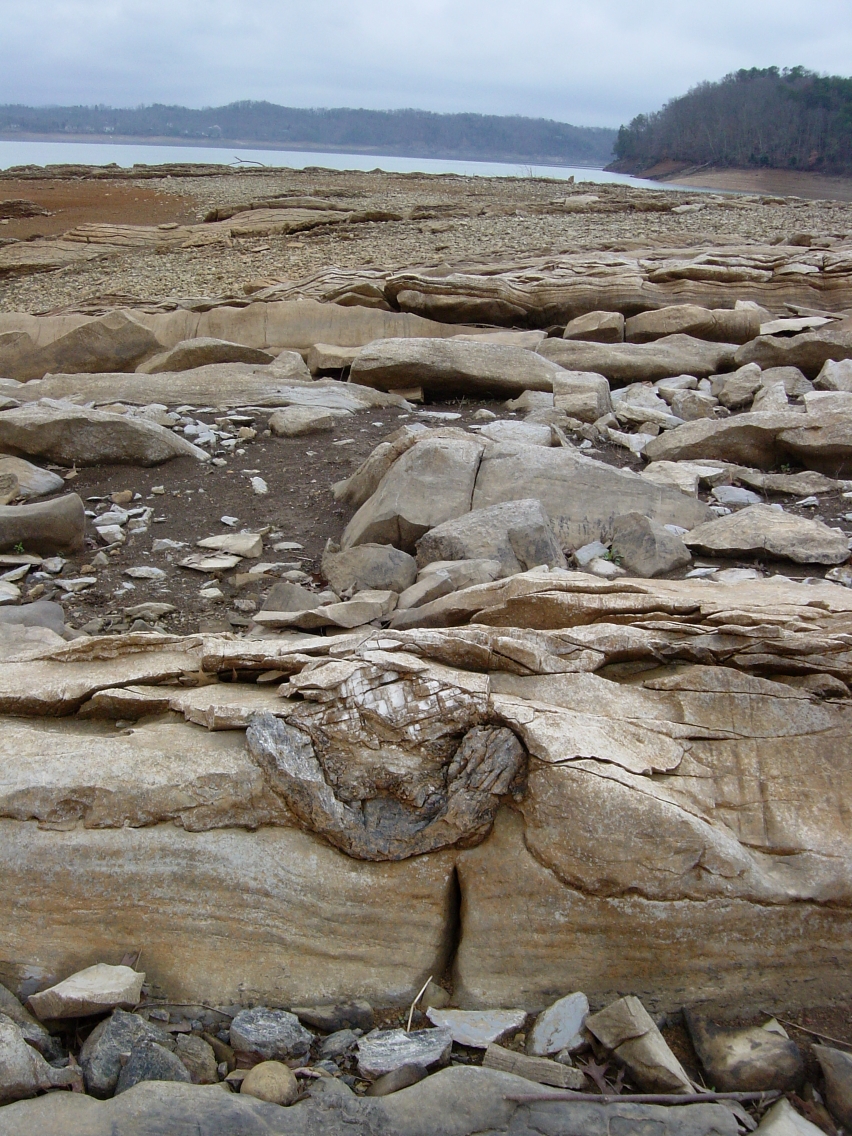
Large chert and calcite nodular feature, possibly of
algal stromatolitic origin.
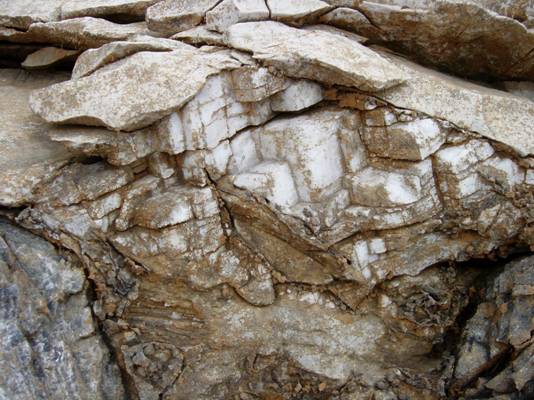
Close-up of massive calcite

Erik Haroldson’s analytic work on a specimen of the
“stinkstone” dolomite veins and the associated
clays from Douglas Dam.
NEXT
Weathering of carbonate
bedrock
Crystals freed from carbonate bedrock now in
residual clay
Quartz_crystals_2.htm
|
Index
|